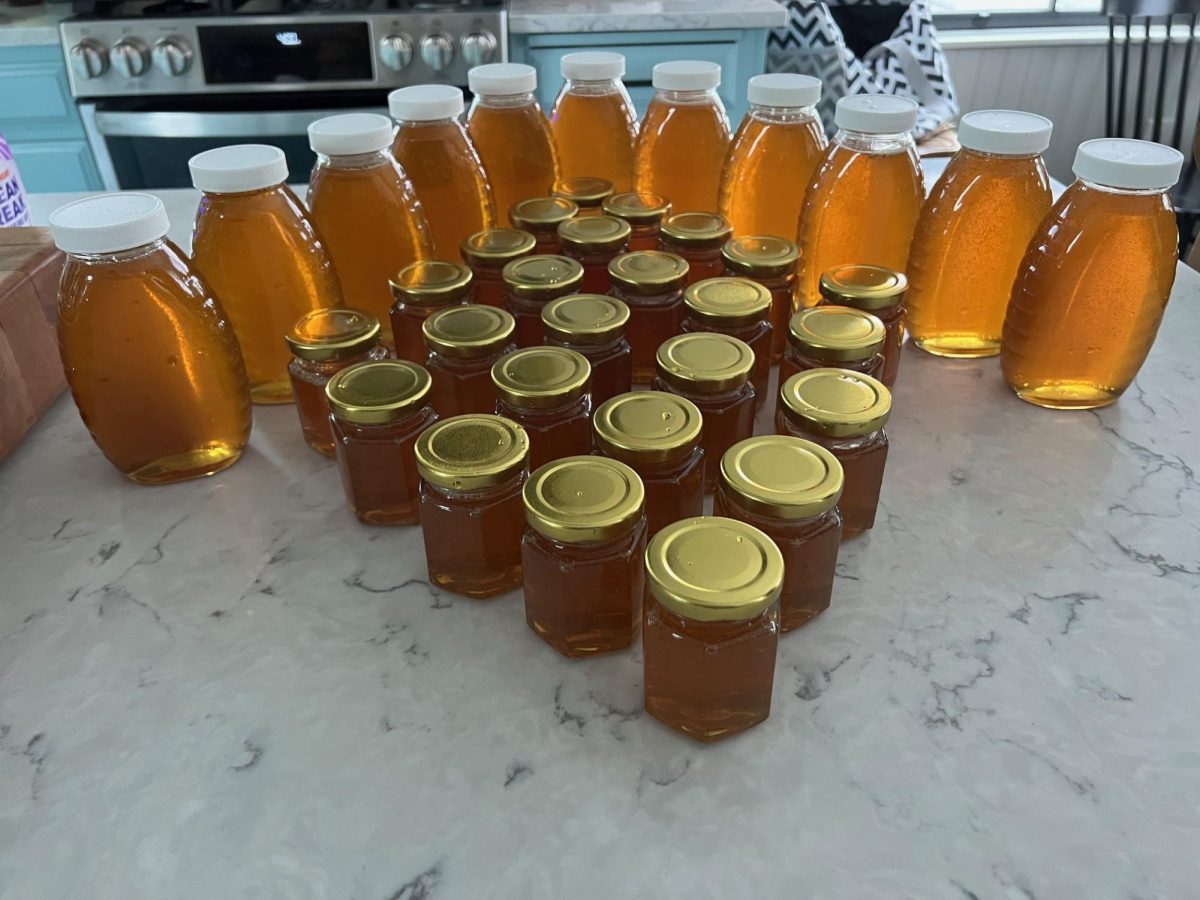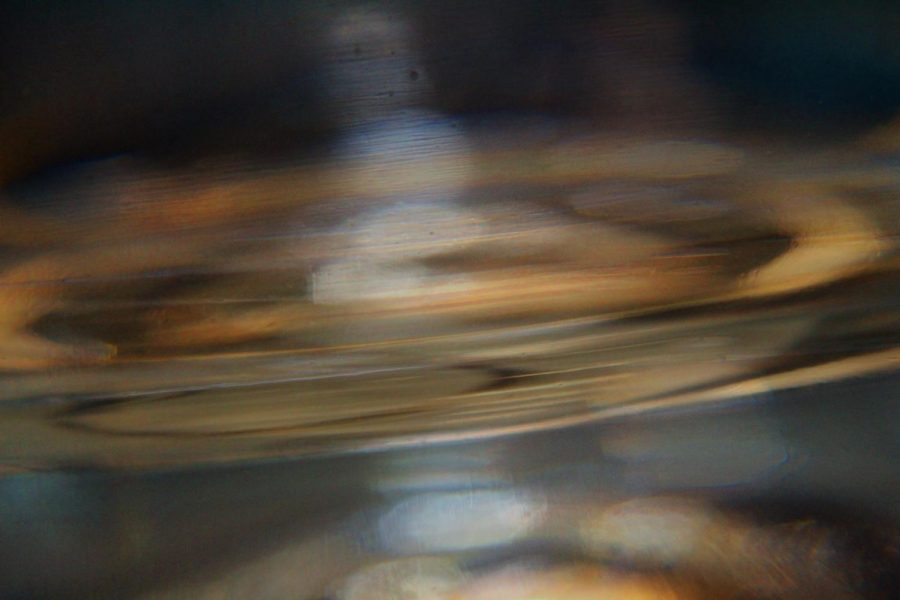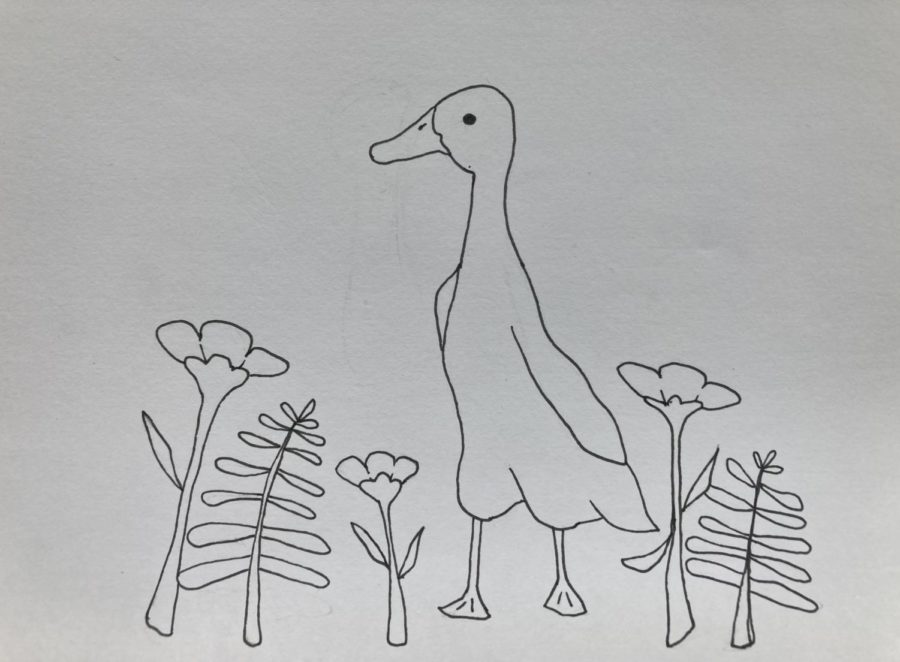Running into spring
How runner ducks benefit your garden
“Runner Duck in a Garden” pen sketch by Evelyn Porter
March 24, 2023
As spring starts to come around, garden planning begins. Whether “garden” means just one potted plant, a veggie patch, or filling the yard with flowers, most of us have felt the joy of watching our hard work flourish in the form of plant growth.
Gardening can be seen as an art form, a way of expressing one’s self, and showing individuality. What could be more unique than the fauna that accompanies your precious flora? While there are many types of animals that are beneficial to a garden, my personal favorite is commonly referred to as a runner duck.
These charming birds stand much more upright than your average duck, so they are more likely to be mistaken for geese than other species of ducks. Thankfully, any confusion caused is immediately made up for by their helpfulness in the garden. Not only do they provide an adorably odd source of entertainment, they have genuine benefits for your plants.
The Indian runner duck, as they are officially called, are very versatile in their diets. Lucky for the average gardener, runner ducks eat a variety of harmful bugs. They eat mosquitos and their larvae, flies, slugs, snails, and particularly enjoy ticks. As they roam tall summer grass they can pick up many ticks, and eat massive amounts of them in a single day.
Of course, if you enjoy a garden with fewer ticks (as most of us do) this is wonderful, and fewer slugs and snails would be great for your garden’s health. Slugs and snails eat young grass seedlings, low tree bark, foliage, and fruits. Thus, especially if you have a vegetable or fruit garden, runner ducks will be a very helpful ally.
Another benefit runner ducks provide for your plant life is the ways they literally help plants grow. Instead of just eating the harm-doers, runner ducks also directly benefit the plants in your garden in a few ways. Mainly, their feces composts quickly and is very good for plants. The excess nutrients from plant matter, insects, bugs, and the rest of a runner duck’s omnivorous diet are left for the plants to enjoy.
Beyond helping protect or nurture plant life, Indian runner ducks are fun to watch. Unlike ducks native to Gloucester, the Indian runner duck is shaped more like a bowling pin than a duck. They stand upright, much like a penguin, and run instead of waddling. Not only are they funny to watch from a distance, they are amicable and social creatures, who enjoy spending time with other ducks and with people they trust.
Runner ducks come in a variety of patterns and colors, all equally adorable. They can be herded like sheep or goats, and provide up to 200 eggs per year. They are also flightless birds, which means they are easier to tend. Runner ducks enjoy both warm and cold weather, so they make great companions here where changing seasons give them variety. They will happily live outside in the snow during winter months if given their usual shelter and a place to get their feet off the icy ground.
If you are looking for a winged garden helper, a new friend and addition to your household, or just need cute animal pictures to pick up your day, Indian runner ducks are the perfect solution.








































